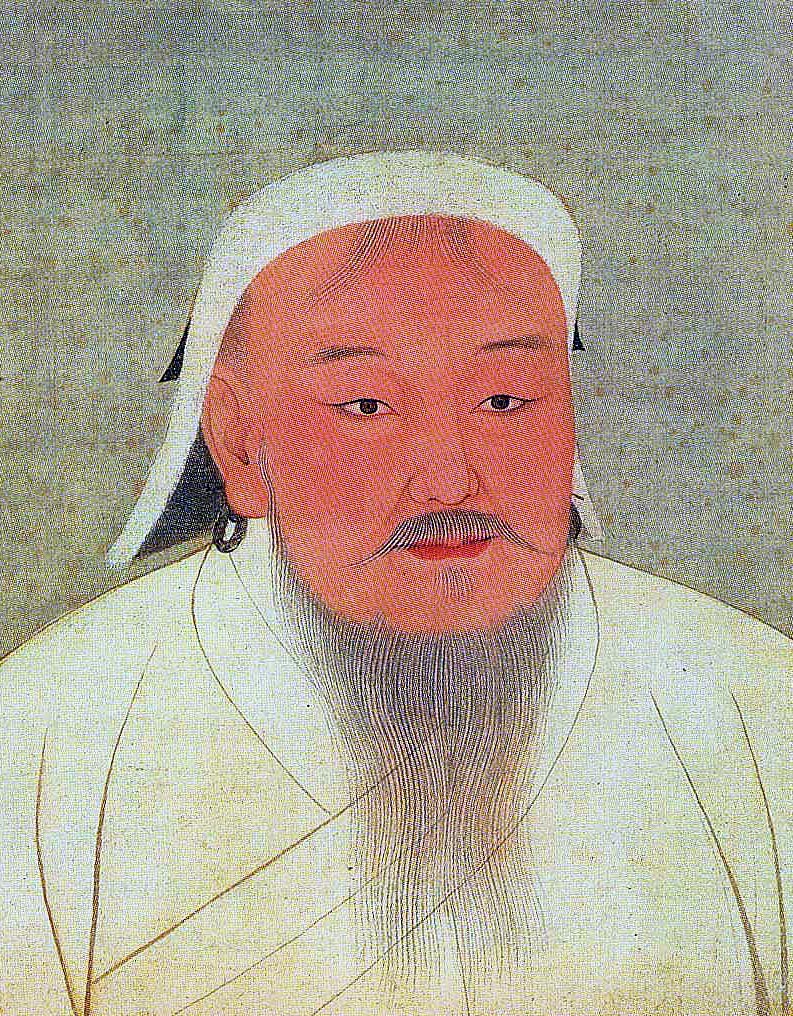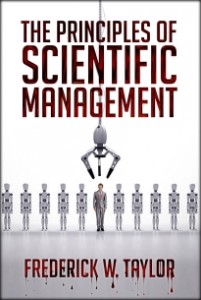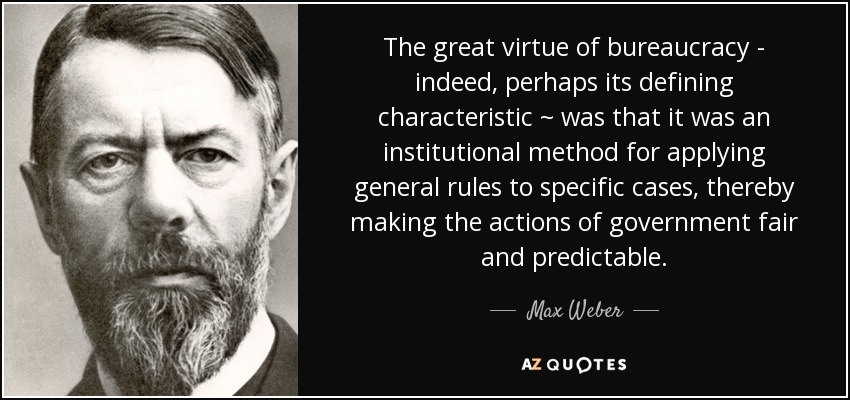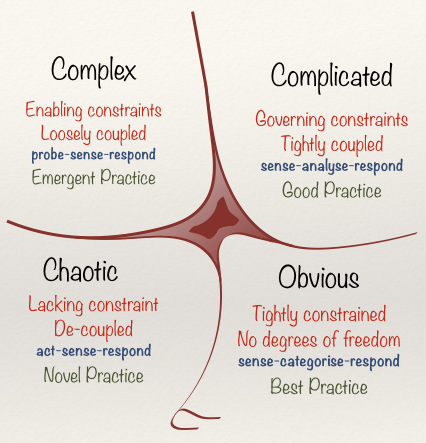Operating Model: The Magna Carta for Organisations?

You’ve no doubt heard of the Mangna Carta (1215). It established the principle that the king was subject to and not above the law, enshrined the right of fair trial in law, standardised weights and measures1 and (#dontmentionbrexit) provided for freedom of travel and freedom of trade:
All merchants may leave or enter England in safety and security. They may stay and travel throughout England by road or by water, free from all illegal tolls, in order to buy and sell according to the ancient and rightful customs. This is except, in time of war, those merchants who are from the land at war with us. And if such merchants are found in our land at the beginning of the war, they shall be detained, without injury to their bodies or goods, until information is received by us (or by our chief justiciar) about in what way are treated our merchants, thence found in the land at war with us . If our men are safe there, the others shall be safe in our land.
It shall be lawful in future for any one, keeping loyalty to the Crown, to leave our kingdom and to return safely and securely, by land and by water. This is except in time of war, when men may go, only in the public interest, for some short period. (This excludes, always, those imprisoned or outlawed in accordance with the law of the realm, natives of any country at war with us, and merchants, who shall be treated as previously stated).
Whilst the Magna Carta has had a fairly rocky 800 year history; being annulled within months of being issued, and many of the clauses being removed or softened over time it has not only shaped our liberal democracy, but (arguably) more importantly has started a shift from Customary Law to written Statutory Law with prescribed mechanisms for judgment and enforcement.
In other words, it was a short document that transformed the governance of the country; or in the words of the Magna Carta itself initiated a “reform of our realm”
…and the advancement of the holy Church, and for the reform of our realm, by advice of our venerable fathers…

It’s hard to think of a written document changing a whole way of living, but the Magna Carta is by far not the only example. Indeed, preceding it by nine years the The Yasak of Genghis Khan set out some simple rules (and punishments) of the land, enshrined freedom of religion, and set out rules for his successor to be appointed - all despite being illiterate himself.
The impact was immense:
“Petty wars and the sudden, ferocious raids of neighbors disappeared. Banditry almost vanished. The ordinary tribesman, travelling across those endless pastures with his tent, his wagon, his family and his flocks, a new peace now brought him comfort.” [Peter Brent, Genghis Khan]

Most organisations today may not have banditry, but are operating much like countries did before the Magna Carta (and the Yasak); the freedoms and responsibilities of individuals are passed down from one generation to the next rather than shaped to solve the problems of the day creating a competitive and political environment which serves neither the people who work in them, or those the organisation is meant to serve. For a disturbing picture of the sort of people that these organisations create check out MacLeod’s Archetypes.
Today’s organisations function instead using a legacy Operating Model (because that is the name we give to these ways of workings) that is based on ideas from over a century ago, and is shared not as a document (which can be challenged and updated) but is transmitted culturally. In order to understand today’s orgainisations it is worth understanding the key influences that made them the way they are - and which are unconsciously culturally transmitted (infected) from one generation to the next. Meet Frederick Taylor’s “Principles of Scientific Management” and Max Weber’s work on Bureaucracy:
Taylor advocated:

- Replace working by “rule of thumb,” or simple habit and common sense, and instead use the scientific method to study work and determine the most efficient way to perform specific tasks.
- Rather than simply assign workers to just any job, match workers to their jobs based on capability and motivation, and train them to work at maximum efficiency.
- Monitor worker performance, and provide instructions and supervision to ensure that they’re using the most efficient ways of working.
- Allocate the work between managers and workers so that the managers spend their time planning and training, allowing the workers to perform their tasks efficiently.
and Weber:

Bureaucracies are organized according to rational principles. Offices are ranked in a hierarchical order and their operations are characterized by impersonal rules. Incumbents are governed by methodical allocation of areas of jurisdiction and delimited spheres of duty. Appointments are made according to specialized qualifications rather than ascriptive criteria.2
Yet Weber also noted the dysfunctions of bureaucracy;
“Its major advantage, the calculability of results, also makes it unwieldy and even stultifying in dealing with individual cases.”
Weber’s ideal bureaucracy is characterized by the following:
- Hierarchical organization
- Delineated lines of authority with fixed areas of activity
- Action taken on the basis of, and recorded in, written rules
- Bureaucratic officials with expert training
- Rules implemented by neutral officials, and
- Career advancement depending on technical qualifications judged by organization, not individuals
There is a great deal to like in these two visions of organistional operation. Indeed the first three of Taylor’s points look pretty solid, as do the last three of Weber’s ideals. A good case could be made that we don’t do these things well enough in organisations today.
The three traps that I think they lead us into however:
- That managers and workers should be seperate. It’s been years since we lost the idea of blue collar and white collar staff, dressed differently, with fundementaly different roles and privilages but the thinking behind it seems to remain in place. I think this is a legacy of manufacturing where there was an intrinsic seperation between the design and the production; there was literally no way that a worker on the Ford Mondeo production line could make a few tweaks and end up with a Focus instead. Regardless of how much autonomy you chose to gave workers about how they did their jobs, there was no wiggle room on what that produced. That distinction simply doesn’t exist for modern information workers where it is rarely possible to meet an entire specification, and thus a key role of every “worker” is to bring their skill to bear in helping to decide what is possible, and to negotiate changes to what is required to make it more achievable. In this sense every worker is a manager too, and arguably the most useful managers are those who still do “real” work and are most connected to the practicalities of delivering value.

-
Action can be pre-determined. Complexity theory gives us some very useful language to understand the applicability of Weber’s second ideal. The application of pre-determined rules clearly relates to the Obvious quadrant of the Cynefin model, where we expect a sense-categorise-respond cycle which corresponds with rule-based activity. However as work becomes complicated and then complex we move to sense-analyse-respond (use skill over written rule) and probe-sense-respond (experiment) to choose our course of action.
-
Work can and should be partitioned. One of the things that Systems Engineers get trained to do is splitting a problem up into “Mutually Exclusive, Collectively Exhaustive” parts. What they don’t get trained to do is figure out what do do when that’s not possible. Conversely Systems Thinking advocates looking at a system as a set of interconnected parts, which can’t be easily split apart from each other. Again, context is everything. In the domain on the complicated (so-called “hard systems engineering”) things can be split into parts (like a submarine is made of bits). In soft-systems approaches we look at things as ecosystems, which tend to be created through evolutionary approaches, and which can’t be split down into its constituent parts without breaking. Whilst it’s possible to take a submarine to bits and put it together, you can’t really do that with a bird or an ocean. It just doesn’t make sense. Likewise try and decide where one cloud stops and another starts.
I hope that these three issues illustrate the fact that the way we run businesses is contextual; and that our changing problem means that todays organisations might need to adapt their models to suit their need. For example Amazon uses a hierarchial structure to manage their warehouses and distribution, but a network structure to manage their software development.
To change our ways of working we first need to understand the assumptions and history of our current models so we know how to change them. It is for this reason that I advocate organisations start by understanding how their current Operating Model works before trying to change it. Having the Opertaing Model in written form will make it easier to change as well as making it clear to all the deficiences we accept in our routine, which are made clear when we see them written down.
-
About weights and measures it reads (all translations from http://www.magnacartaplus.org/magnacarta/]:
There shall be one measure of wine, of ale and of corn (namely, “the London quarter”) throughout our whole realm. There shall also be one width of cloth (whether dyed, russet, or halberget): that is, two ells within the selvages. Let weights also be standardised similarly.
-
Source: Boundless. “Weber’s Model for Bureaucracy.” Boundless Sociology. Boundless, 08 Aug. 2016. Retrieved 31 Aug. 2016 from https://www.boundless.com/sociology/textbooks/boundless-sociology-textbook/social-groups-and-organization-6/bureaucracy-56/weber-s-model-for-bureaucracy-352-10202/ ↩